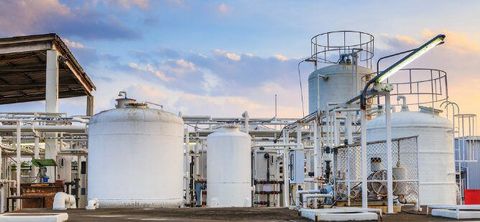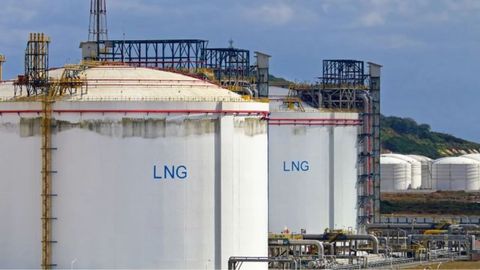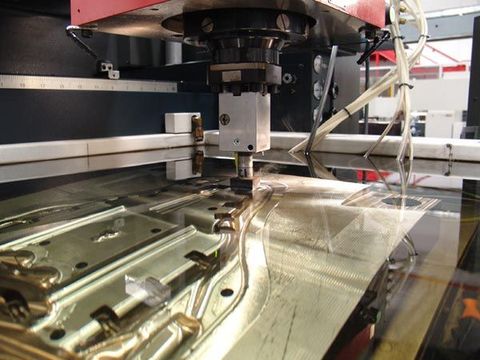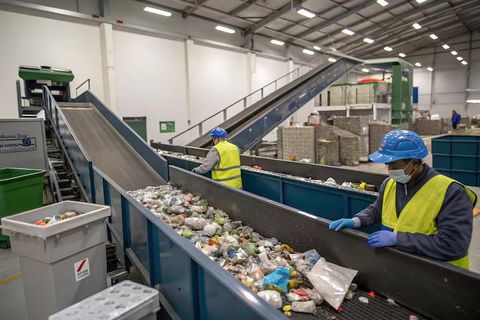A Complete Guide to Power Substation Equipment: Insights and Technical Details
Power substations are critical elements of the electrical grid, serving as key nodes where voltage levels are adjusted to ensure efficient transmission and distribution of electricity. They exist because electricity generated at power plants must be transmitted over long distances at high voltages and then reduced for safe and usable delivery to homes, businesses, and industries.
A power substation performs three main functions: transforming voltage, switching electrical circuits, and protecting the grid from faults. It consists of interconnected systems of transformers, circuit breakers, isolators, busbars, and control equipment that manage and protect power flow.
There are different types of substations—transmission, distribution, and switching—each designed to handle specific voltage ranges and operational purposes. Modern substations also include digital communication systems that enhance automation, efficiency, and reliability.

Importance
Power substation equipment plays a vital role in ensuring stable, reliable, and efficient electricity delivery. Its importance can be understood through several key points:
-
Voltage regulation: Equipment such as transformers adjusts voltage levels to reduce power loss during transmission and ensure safe distribution.
-
Grid stability: Circuit breakers and protective relays help prevent outages and isolate faulty sections during system disturbances.
-
Energy reliability: Substations maintain continuous power supply to industries, businesses, and households.
-
Integration of renewable energy: Modern substations facilitate the connection of renewable energy sources like wind and solar into the main grid.
-
Safety and monitoring: Advanced control and communication systems allow remote supervision, fault detection, and data analysis.
Power substation equipment directly affects energy companies, grid operators, industrial facilities, and even residential users by maintaining the quality and consistency of power supply.
Recent Updates
The period 2024–2025 has seen significant technological and regulatory changes in substation design, monitoring, and sustainability:
-
Digital substations (2025): More utilities are transitioning to digital substations, replacing copper wiring with fiber optics for faster, more secure data transmission.
-
Integration of AI and IoT (2025): Artificial Intelligence (AI) and Internet of Things (IoT) technologies are now being used to predict equipment failures and optimize grid performance.
-
Gas-insulated switchgear (GIS) improvements (2024): Innovations in GIS technology have made substations more compact and environmentally friendly by reducing sulfur hexafluoride (SF₆) gas usage.
-
Cybersecurity focus (2025): With increased automation, protection from cyber threats has become a top priority for substation operators.
-
Renewable grid adaptation (2024): Substations are being upgraded to handle distributed energy sources, enabling bidirectional power flow and smart grid integration.
These developments are shaping the next generation of substations, emphasizing sustainability, digitalization, and reliability.
Laws or Policies
Government policies and international standards play a central role in how substation equipment is designed, installed, and maintained. Compliance ensures safety, environmental responsibility, and system reliability.
-
IEEE and IEC Standards: The Institute of Electrical and Electronics Engineers (IEEE) and the International Electrotechnical Commission (IEC) provide detailed technical guidelines for substation equipment design and performance.
-
Environmental Regulations: Many countries now regulate the use of SF₆, a potent greenhouse gas used in switchgear, encouraging alternatives like vacuum or dry air insulation.
-
National Grid Codes: Each country enforces specific operational and safety standards to maintain grid stability and synchronization between utilities.
-
Occupational Safety Laws: Regulations ensure that workers handling high-voltage equipment adhere to strict safety procedures and personal protective measures.
-
Renewable Integration Policies: Governments promote upgrades and modernization of substations to accommodate renewable energy systems and energy storage solutions.
For example, in 2025, several European and Asian nations have implemented green substation programs promoting digital monitoring, low-emission equipment, and remote inspection systems.
Tools and Resources
A range of digital tools and engineering resources support professionals working with power substation systems. These help in design, simulation, monitoring, and maintenance:
-
Electrical Design Software: ETAP, DIgSILENT PowerFactory, and AutoCAD Electrical are widely used for substation layout and simulation.
-
Load Flow and Fault Calculators: Online platforms and engineering tools help assess electrical load, short-circuit current, and relay coordination.
-
Asset Management Systems: Cloud-based systems monitor the health of transformers, breakers, and other components in real time.
-
GIS and SCADA Platforms: Geographic Information Systems (GIS) and Supervisory Control and Data Acquisition (SCADA) software enhance real-time monitoring and control of substation equipment.
-
International Standards Databases: IEEE Xplore and IEC Webstore provide access to global standards and specifications for equipment testing and certification.
-
Educational Resources: Engineering institutions and e-learning platforms offer training in grid automation, protection, and maintenance.
Example Table: Common Power Substation Equipment and Functions
| Equipment Type | Primary Function | Typical Voltage Range (kV) |
|---|---|---|
| Power Transformer | Voltage transformation between networks | 11–765 |
| Circuit Breaker | Interrupts current during faults | 11–400 |
| Isolator/Disconnector | Ensures safe maintenance conditions | 33–220 |
| Busbar | Conducts and distributes power | 33–765 |
| Surge Arrester | Protects equipment from voltage spikes | 11–400 |
| Control Panel & Relay | Monitors and protects system operation | All ranges |
FAQs
What are the main components of a power substation?
The primary components include transformers, circuit breakers, busbars, isolators, surge arresters, and control panels. Together, they regulate, distribute, and protect power flow in the grid.
What is the difference between air-insulated and gas-insulated substations?
Air-insulated substations (AIS) use open-air insulation and occupy larger areas, while gas-insulated substations (GIS) use compact enclosures filled with insulating gas for space efficiency and enhanced safety.
How do modern substations use digital technology?
Digital substations use sensors, fiber optics, and intelligent electronic devices (IEDs) for data communication, allowing remote control, real-time monitoring, and predictive maintenance.
Why is SF₆ gas being replaced in switchgear?
SF₆ has a high global warming potential. New eco-friendly alternatives like dry air, fluoronitrile blends, and vacuum insulation are now used to reduce environmental impact.
Who ensures the safety and reliability of substation equipment?
National energy regulators, grid operators, and international organizations like IEEE and IEC establish and monitor compliance with technical and safety standards.
Conclusion
Power substation equipment forms the backbone of modern electricity infrastructure, enabling reliable and efficient energy transmission. Each component—from transformers to control systems—plays a specific role in maintaining voltage balance, protecting networks, and ensuring consistent power supply.
The growing adoption of digital substations, IoT sensors, and eco-friendly technologies reflects a shift toward smarter, more sustainable energy systems. As governments and industries work together to modernize grids, power substations will continue evolving to support renewable integration, cybersecurity, and real-time data management.






